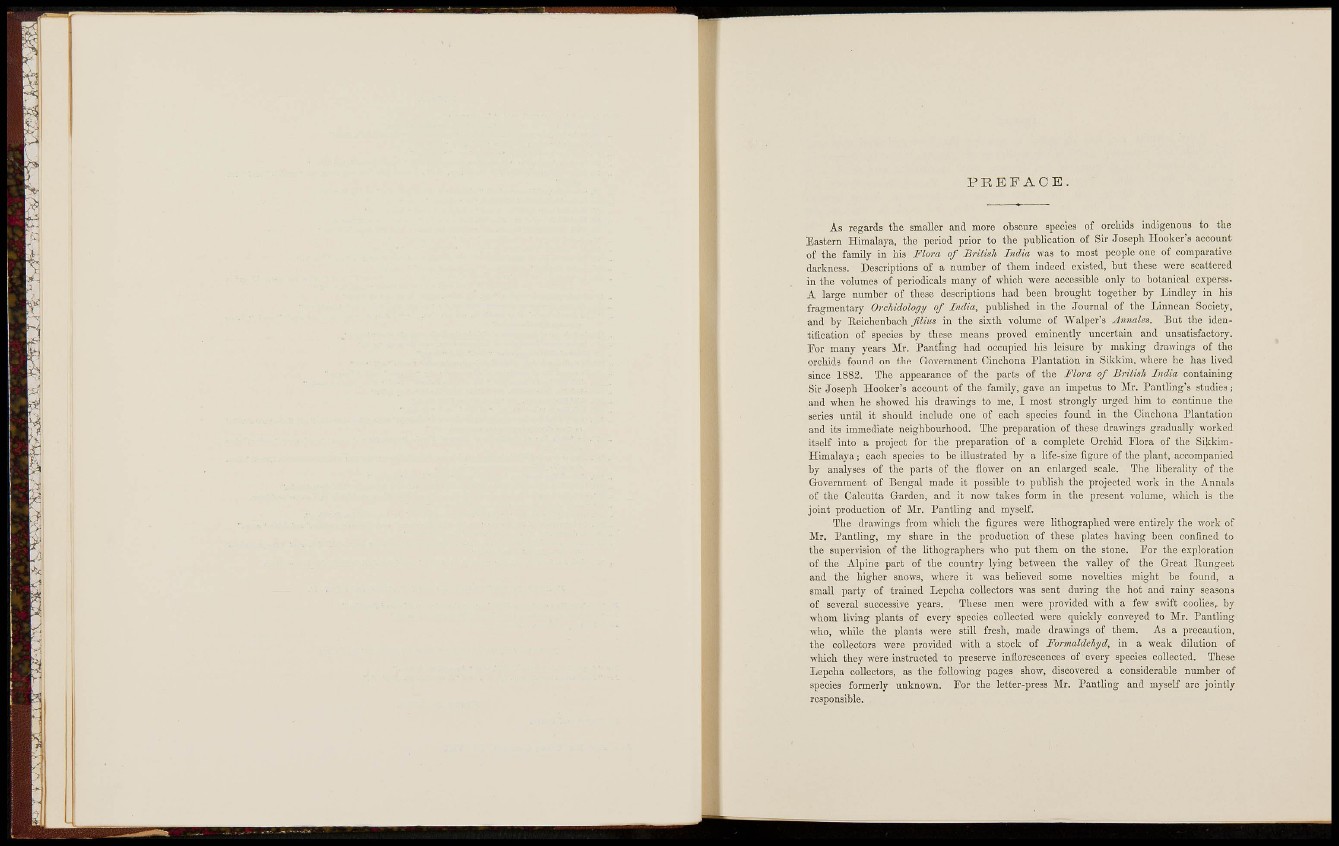
u kV
P R E F A C E .
As regards the smaller and more obscure species of orchids indigenous to the
Eastern Himalaya, the period prior to the publication of Sir Joseph Ilookcr's account
of the family in hia Flora of British India was to most people one of comparative
darkness. Descriptions of a number of them indeed existed, but these were scattered
in the volumes of periodicals many of which were accessible only to botanical experss.
A large nimiber of these descriptions had been brought together by Lindley in his
fragmentary Orchidology of India, published in the Journal of the Linnean Society,
and by Eeichenbach fdius in the sixth volume of Walper's Amides. But the identification
of species by these means proved eminently uncertain and unsatisfactory.
Por many vears Mr. Pantling had occupied his leisure by making drawings of the
orchids found on the Grovernment Cinchona Plantation in Sikkim, where he has lived
since 1882. The appearance of the parts of the Flora of BrilisJi India containing
Su- Joseph Hooker's account of the family, gave an impetus to Mr. Panthng's studies;
and when he showed his drawings to me, I most strongly urged him to continue the
series until it should include one of each species found in the Cinchona Plantation
and its immediate neighbourhood. The preparation of these drawings gradually worked
itself into a project for the preparation of a complete Orchid Flora of the Sikkim-
Himalaya; each species to be illustrated by a life-size figure of the plant, accompanied
by analyses of the parts of the flower on an enlarged scale. The liberality of the
Government of Bengal made it possible to publish the projected work in the Annals
of the Calcutta Garden, and it now takes form in the present volume, which is tlie
joint production of Mr. Panthng and myself.
The drawings from which the figures were lithographed were entirely the work of
Mr, Pantling, my share in the production of these plates having been confined to
the supervision of the lithographers who put them on the stone. For the exploration
of the Alpine part of the country lying between the vaDey of the Great Pungeet
and the higher snows, where it was believed some novelties might be found, a
small party of trained Lepcha collectors was sent during the hot and rainy season.^
of several successive years. These men were provided with a few swift coolies, by
whom li-ving plants of every species collected were quickly conveyed to Mr. Pantling
who, while the plants were still fresh, made drawings of them. As a precaution,
the collectors were provided with a stock of Formaldehyde in a weak dilution of
wliich they were instructed to preserve inflorescences of every species collected. These
Lepcha collectors, as the following pages show, discovered a considerable number of
species formerly unknown. Por the letter-press Mr. Pantling and myself arc jointly
responsible.